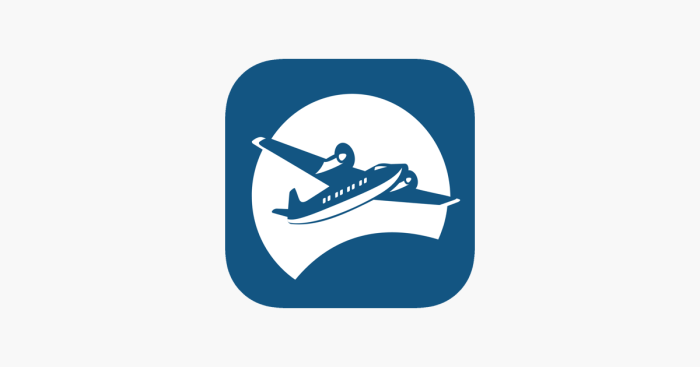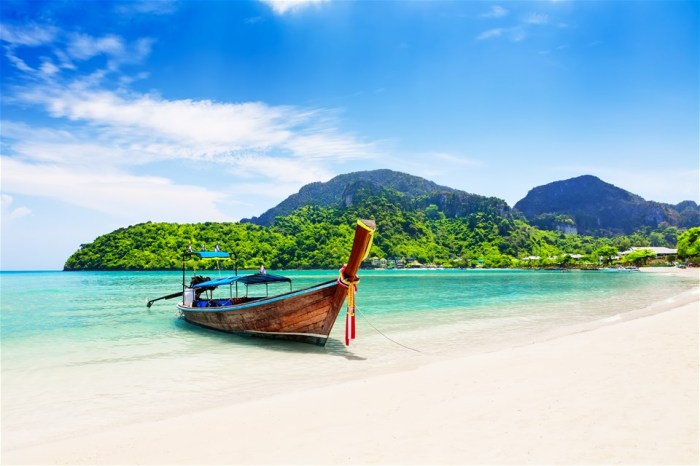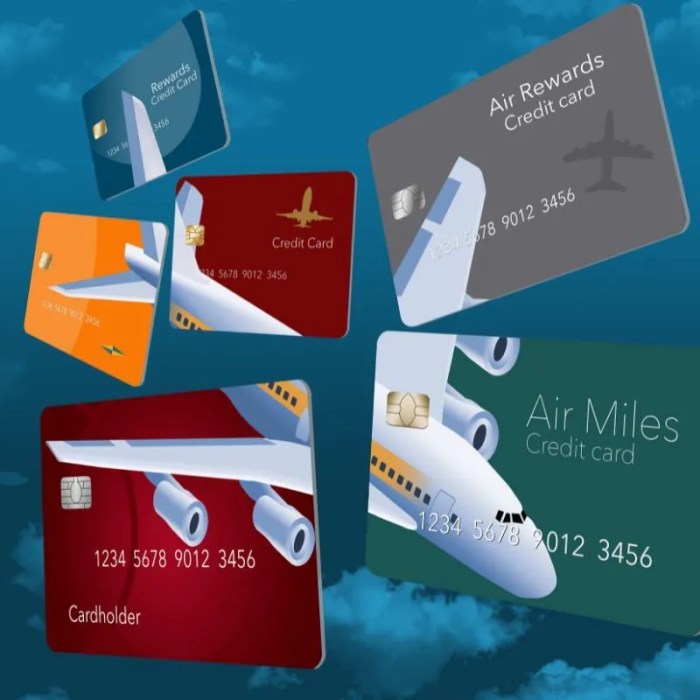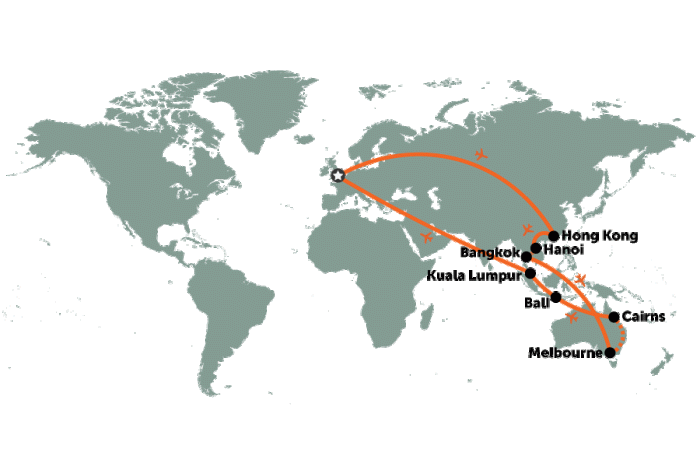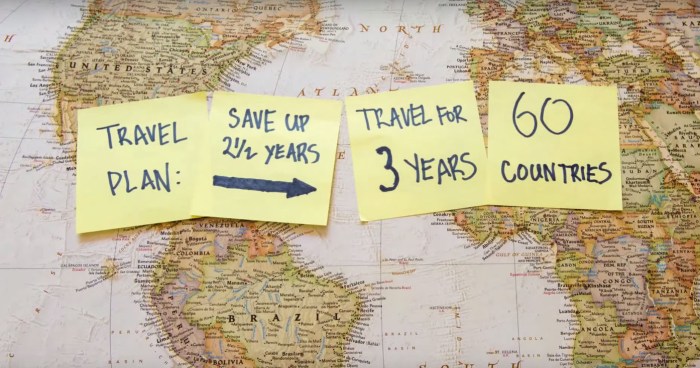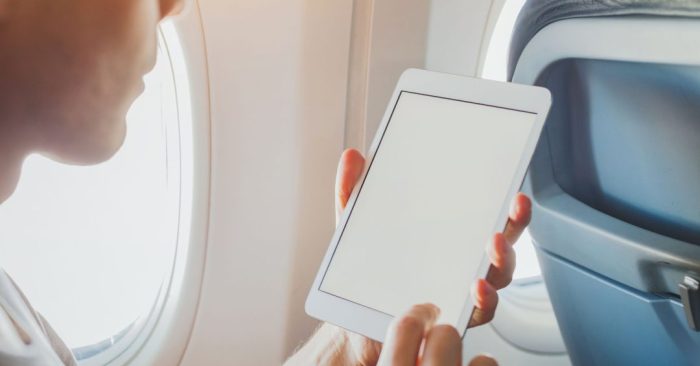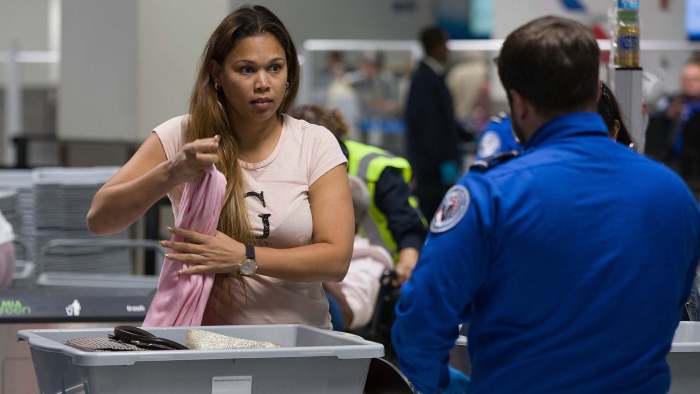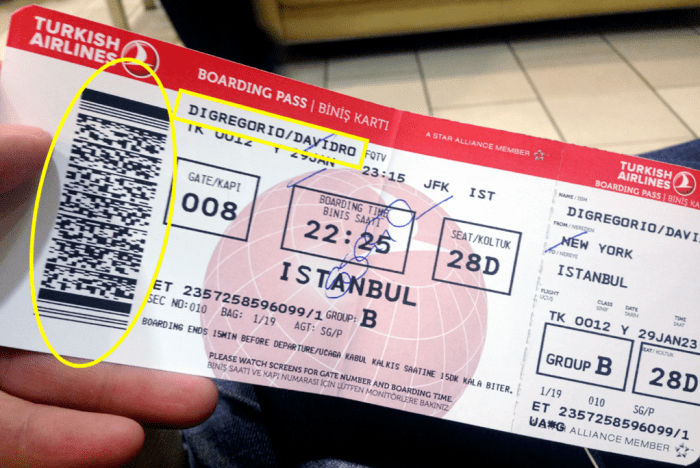The most expensive backpack in the world isn’t just another piece of luggage; it’s a statement, a symbol of unparalleled luxury, and a testament to meticulous craftsmanship. From rare materials to intricate designs, these bags are more than functional; they are works of art.
These exclusive creations often feature premium leathers, exotic woods, or precious metals, elevating the backpack beyond a practical tool and into the realm of exquisite collectibles. Understanding their origins, design, and the factors driving their exorbitant prices provides insight into the world of high-end luxury goods. We’ll explore the innovative designs, meticulous craftsmanship, and brand recognition that combine to create these remarkable pieces.
Introduction to the Most Expensive Backpacks
The pursuit of luxury extends to seemingly mundane items, and the backpack, a staple of daily life, is no exception. From utilitarian necessities to coveted status symbols, the evolution of expensive backpacks mirrors broader trends in consumerism and craftsmanship. This exploration delves into the history, design elements, and factors driving the exorbitant prices of these exclusive accessories.
A Brief History of Expensive Backpacks
The concept of a luxury backpack is relatively recent, emerging from a confluence of factors including the rise of designer brands, the increasing demand for bespoke goods, and a growing appreciation for meticulous craftsmanship. Early examples often focused on high-end materials and tailored designs, setting the stage for the more extravagant iterations of today. The introduction of specialized backpacks for niche activities like mountaineering and adventure travel further fueled the market, as sophisticated features and durability became prized.
Types of Expensive Backpacks
Luxury backpacks span a spectrum of styles and functions. Designer backpacks, often from established fashion houses, leverage brand recognition and exclusivity to command high prices. Custom-made backpacks, crafted to individual specifications, showcase unparalleled attention to detail and often incorporate rare materials. Specialized backpacks cater to specific needs, such as those designed for outdoor enthusiasts or professionals in particular fields, emphasizing performance and functionality alongside luxury.
Factors Contributing to High Prices
Several factors contribute to the premium pricing of luxury backpacks. The use of rare and high-quality materials, like exotic leathers, precious metals, or meticulously woven fabrics, significantly increases production costs. Sophisticated craftsmanship, often involving intricate stitching, specialized tools, and time-consuming processes, also drives up the price. Furthermore, brand recognition and exclusivity, along with limited production runs and limited-edition designs, play a significant role in the inflated cost.
Materials and Craftsmanship
The most expensive backpacks often feature exceptional materials and intricate craftsmanship. For example, supple and durable exotic leathers, such as crocodile or ostrich skin, are prized for their texture and rarity. High-end fabrics, including specialized nylon blends or meticulously woven silk, are employed for their strength, aesthetic appeal, and unique properties. The level of craftsmanship, from precise stitching to intricate hardware detailing, significantly impacts the backpack’s overall value.
Comparison of Expensive Backpacks
| Type | Features | Materials | Approximate Price |
|---|---|---|---|
| Designer Backpack | Recognizable brand, stylish design | High-quality leather, durable fabrics | $500 – $5,000+ |
| Custom-Made Backpack | Tailored to individual needs, unique design | Rare leathers, precious metals, bespoke fabrics | $5,000 – $50,000+ |
| Specialized Backpack | Specific features for particular activities (e.g., mountaineering, photography) | High-performance fabrics, advanced engineering | $1,000 – $10,000+ |
Note: Prices are approximate and can vary greatly based on specific design elements and materials.
Design and Features of High-End Backpacks
Beyond mere carrying capacity, high-end backpacks embody meticulous craftsmanship and innovative design. These luxury items often integrate cutting-edge materials and engineering techniques, reflecting a commitment to both functionality and aesthetic appeal. The unique design elements and features contribute significantly to their exorbitant price points, setting them apart from standard backpacks.These exceptional backpacks are more than just containers; they are statements of refined taste and sophisticated functionality.
Their elevated construction and meticulous details underscore the dedication to quality and performance that characterizes these premium products. The discerning consumer often seeks not just utility, but also an embodiment of luxury and style, driving the demand for these bespoke items.
Innovative Design Elements
The most expensive backpacks frequently feature a fusion of high-performance materials and groundbreaking design. Advanced engineering principles are applied to create lightweight, yet robust structures capable of withstanding considerable weight. These innovative elements are not merely aesthetic additions; they directly impact the backpack’s functionality and durability. Consider the use of aerospace-grade materials, often found in these high-end products, which are renowned for their exceptional strength-to-weight ratios.
Special Features
Beyond structural integrity, these backpacks often boast a range of special features tailored to specific needs and lifestyles. These features typically cater to the demands of professionals or individuals with demanding schedules. For example, specialized compartments for laptops, tablets, and other electronic devices are common, often incorporating shock-absorbing materials to protect valuable equipment. Water-resistant or waterproof coatings are also prevalent, ensuring the contents remain safe and dry in inclement weather.
Construction and Engineering Techniques
The construction of these high-end backpacks employs meticulous engineering techniques. Precise stitching and the use of advanced fastening mechanisms are crucial for maintaining structural integrity and ensuring longevity. These backpacks often utilize specialized materials with unique properties, such as lightweight yet durable fabrics and reinforced seams. The manufacturing process often involves skilled artisans and advanced machinery to ensure the high standards of quality and precision.
Comparison of High-End Backpacks
Different high-end backpacks cater to varying needs and preferences. Some might prioritize superior organization and storage capacity, while others focus on lightweight design and comfort. For example, a backpack designed for a professional photographer might emphasize the security and accessibility of equipment compartments, whereas a backpack intended for outdoor enthusiasts might prioritize waterproof materials and reinforced straps.
Unique Features Table
| Backpack Model | Purpose/Function | Unique Features |
|---|---|---|
| The “Explorer” | Outdoor expeditions and travel | Waterproof materials, reinforced straps, multiple compartments for gear, hydration reservoir compatibility |
| The “Executive” | Business professionals and frequent travelers | Compartments for laptops and tablets with shock-absorbing inserts, multiple secure pockets, ergonomic design for comfort |
| The “Artisan” | Artists and creatives | Specialized compartments for art supplies, durable materials, easy access to tools, aesthetically pleasing design |
Materials and Craftsmanship: Most Expensive Backpack In The World

Source: graziamagazine.com
The most expensive backpacks aren’t just containers; they’re meticulously crafted works of art, reflecting the pinnacle of luxury materials and unparalleled craftsmanship. These bags represent a significant investment, not just in a product, but in the artistry and dedication poured into their creation. Beyond the aesthetic appeal, the exceptional materials and manufacturing processes directly contribute to the bag’s durability and longevity.The materials and techniques used in these high-end backpacks are often chosen for their unique properties, rarity, and visual appeal.
This selection reflects a commitment to quality and innovation, setting these products apart from the mainstream market. The intricate processes employed are not only impressive but also essential in maintaining the bags’ structural integrity and aesthetic appeal over time.
Rare and Premium Materials
The selection of materials for these high-end backpacks often prioritizes rarity and exclusivity. These materials contribute significantly to the bag’s overall value and aesthetic. Exotic leathers, such as alligator or crocodile, are frequently used for their luxurious appearance and durability. Similarly, precious metals like platinum or gold are sometimes incorporated for embellishments or hardware, adding an element of opulence.
Carbon fiber, with its lightweight and high-strength properties, is another material frequently employed in the construction of high-end backpacks, especially those designed for specific needs like travel or professional use.
Intricate Craftsmanship and Techniques
The intricate craftsmanship is a critical aspect of these backpacks. Expert artisans utilize a variety of techniques, from traditional hand-stitching to modern, precision-engineered methods. Hand-stitching, for instance, allows for a level of detail and precision that is difficult to replicate with automated machinery. This level of skill is often passed down through generations, ensuring a consistent quality and a unique touch to each piece.
Advanced sewing techniques are employed to ensure the longevity of the seams, particularly important for heavy-duty backpacks. The attention to detail extends to the finishing touches, including the precise placement of hardware and the perfect alignment of seams, creating a harmonious balance between function and aesthetics.
Manufacturing Process
The manufacturing process of these luxury backpacks often involves multiple stages and specialized artisans. A typical process may begin with selecting the finest materials, followed by meticulous cutting and shaping. Expert leather workers meticulously prepare the leather, often using traditional methods to achieve the desired texture and finish. The construction process, especially for complex designs, requires precise measurements and careful alignment to maintain the backpack’s structural integrity.
The use of specialized tools and machinery, combined with the skill of the artisans, creates a unique blend of precision and artistry. Quality control measures are implemented at each stage to ensure the final product meets the highest standards.
Comparison of Different Brands
Different brands of expensive backpacks employ varying materials and techniques. A brand specializing in luxury leather goods might focus on the quality and texture of the leather, while a brand known for its technical design might emphasize lightweight materials and advanced engineering. The choice of materials and the manufacturing processes directly reflect the brand’s values and aesthetic preferences.
This variation is evident in the selection of materials, the intricacy of stitching, and the use of specialized hardware. For instance, a focus on sustainable materials might be apparent in the use of recycled or ethically sourced components.
Materials and Craftsmanship Table
| Brand | Primary Material | Key Craftsmanship Technique | Example |
|---|---|---|---|
| Brand A | High-quality Italian leather | Hand-stitched seams | Luxury travel backpack |
| Brand B | Carbon fiber and aerospace-grade aluminum | Precision-engineered construction | Professional photographer’s backpack |
| Brand C | Exotic crocodile leather | Hand-tooled and hand-stitched | Executive briefcase |
Brand Recognition and Marketing
The price of luxury backpacks, like those crafted from exotic leathers or featuring bespoke designs, often reflects more than just the materials and craftsmanship. Brand recognition plays a pivotal role in establishing and justifying these exorbitant price points. Strong brand equity translates to perceived value, influencing consumer willingness to pay a premium.Marketing strategies for these high-end backpacks are meticulously designed to cultivate exclusivity and appeal to a specific target demographic.
The positioning of these products emphasizes craftsmanship, heritage, and a unique lifestyle association. Effective branding is crucial in establishing a distinct identity in a competitive market.
Role of Brand Recognition
Brand recognition directly impacts the perceived value of a product. Strong brands evoke trust and desirability, enabling them to command premium prices. Established luxury brands, often with decades of history, carry a legacy of quality and craftsmanship, which is reflected in the pricing of their products. This inherent value perception, combined with marketing efforts, allows these brands to charge significantly more than similar products from lesser-known brands.
Marketing Strategies
High-end backpack brands employ various strategies to promote their products and establish a unique brand identity. These strategies often focus on exclusivity, emphasizing limited editions, bespoke designs, and meticulous craftsmanship. Targeted advertising campaigns, often featuring high-profile influencers and celebrities, are common. Public relations activities, collaborations with other luxury brands, and exclusive events further enhance brand visibility and prestige.
Target Audience
The target audience for these high-end backpacks typically comprises affluent consumers who value luxury, exclusivity, and craftsmanship. These individuals often appreciate the heritage and legacy of the brands, seeing the product as an investment or a symbol of status. Their purchasing decisions are often driven by factors beyond mere functionality, encompassing aesthetic appeal, brand prestige, and a desired lifestyle association.
Comparative Analysis of Marketing Strategies
Different luxury backpack brands employ distinct marketing approaches, tailoring their strategies to their specific brand identities and target audiences. For instance, a brand focusing on heritage and tradition might emphasize historical references and craftsmanship in their marketing materials. A brand emphasizing contemporary design might highlight cutting-edge innovation and technological advancements. This tailored approach reflects the brand’s unique value proposition and strengthens its position in the market.
Table: Contrasting Marketing Approaches
| Brand | Marketing Approach | Branding Focus | Target Audience |
|---|---|---|---|
| Brand A | Emphasis on limited editions, exclusive collaborations, and high-profile events | Exclusivity, heritage | Affluent collectors, investors |
| Brand B | Focus on innovative materials and design, featuring cutting-edge technology | Modernity, innovation | Tech-savvy, forward-thinking consumers |
| Brand C | Leveraging strong brand recognition through historical references and traditional craftsmanship | Heritage, quality | Value-conscious consumers who appreciate tradition |
Functionality and Purpose
Beyond mere aesthetics, the most expensive backpacks are meticulously designed for specific use cases, demanding both exceptional durability and advanced organizational features. These are not simply bags; they are sophisticated tools tailored to meet the needs of discerning professionals, frequent travelers, or collectors with highly specialized requirements. Understanding their intended use and features is crucial to appreciating their value proposition.These luxury backpacks are not just about carrying items; they’re about optimizing the user experience.
Their intricate compartmentalization and thoughtful design allow for the secure and organized transportation of valuable equipment, personal items, and documents. The level of detail and craftsmanship extends to ensuring longevity and resilience, vital for those who rely on these backpacks for daily use.
Intended Use Cases and Functionalities
The functionality of these high-end backpacks directly correlates with their target user. Business executives may prioritize secure storage for laptops and important documents, while adventurers might require specialized compartments for outdoor gear and equipment. Collectors, on the other hand, could benefit from dedicated compartments and organization systems for their prized possessions. The adaptability and versatility of these backpacks are key to their appeal.
Compartments and Organizational Features
These backpacks are not simply a collection of pockets; they are meticulously designed systems for efficient organization. A typical example might feature a padded laptop sleeve, multiple compartments for documents and accessories, and even hidden pockets for valuables. Thoughtful design considerations include waterproof linings for protection from the elements and reinforced stitching to withstand daily wear and tear.
The layout is optimized for ease of access and quick retrieval of items.
Durability and Longevity
High-end backpacks are not just about the aesthetic; they are about enduring quality. Materials like ballistic nylon, reinforced stitching, and specialized waterproofing technologies contribute significantly to their durability. Examples include backpacks designed to withstand harsh climates or daily use in demanding environments. These are built to last, often surpassing the longevity of standard backpacks.
Specific Purpose Design
The design of these luxury backpacks directly addresses the needs of their target audience. A professional photographer’s backpack, for instance, might feature dedicated compartments for cameras, lenses, and accessories, optimized for easy access and protection. Similarly, a backpack for a frequent traveler might incorporate multiple compartments for clothing, electronics, and personal documents, all in a streamlined and accessible layout.
The specific design reflects the demands of the user’s profession or lifestyle.
Compartment and Feature Breakdown
| Compartment/Feature | Specific Function |
|---|---|
| Padded Laptop Sleeve | Provides cushioned protection for laptops, preventing damage during transport. |
| Multiple Document Compartments | Securely stores documents, papers, and files, keeping them organized and accessible. |
| Hidden Valuables Pocket | Offers a discreet and secure location for storing valuables like wallets or cash. |
| Waterproof Lining | Protects contents from moisture damage in wet or humid conditions. |
| Reinforced Stitching | Increases the backpack’s durability and longevity, ensuring it can withstand daily use. |
Notable Examples of Most Expensive Backpacks
The pursuit of luxury extends to seemingly mundane items, and the world of high-end backpacks exemplifies this trend. These aren’t just carriers; they are statements of affluence and exquisite craftsmanship, often imbued with a unique story and purpose. Beyond their price tags, these backpacks reflect a dedication to unparalleled quality and design, catering to discerning clientele.These examples showcase a range of materials, features, and brand identities, offering insights into the factors that drive the extreme price points.
While the most expensive backpack in the world might seem extravagant, it’s a testament to the evolving needs of modern travelers. Planning a trip often requires careful consideration of gear, and this high-end item likely reflects the desire for peak performance and functionality, particularly when it comes to long-distance Travel. Ultimately, the cost likely reflects the premium materials and meticulous craftsmanship that go into such a specialized piece of luggage.
Each represents a specific vision of luxury and function, pushing the boundaries of what a backpack can be.
Examples of High-End Backpacks
Beyond the realm of practicality, high-end backpacks embody a dedication to luxury and craftsmanship. These aren’t just containers for belongings; they are status symbols, often reflecting the values and priorities of their owners. The following examples illustrate the pinnacle of this luxury trend.
- The Hermès Birkin Backpack: This iconic bag, often available in various versions, has been reinterpreted as a backpack. The luxurious materials, such as exotic leathers and intricate stitching, contribute significantly to its high price. Its unique design, often customized, and the exclusivity of the brand elevate it beyond a simple bag.
- The Louis Vuitton Neverfull Backpack: Louis Vuitton’s Neverfull bag, while not explicitly marketed as a backpack, can be used as one. The durability and style of the Neverfull, crafted from high-quality materials, combine to create a luxurious, everyday carry. The adaptability of this design, coupled with the brand’s prestige, contributes to its considerable price.
- Custom-Designed Designer Backpacks: Many high-end designers offer bespoke backpack creations. These commissions often involve unique materials, elaborate designs, and personalized features. The rarity and bespoke nature of these items drive up the price, frequently reaching significant sums.
Detailed Information on Notable Backpacks
The pricing and features of these backpacks often reflect the materials, craftsmanship, and brand recognition associated with them. The stories behind their creation frequently involve meticulous attention to detail, the use of exclusive materials, and a commitment to producing a luxurious product.
| Backpack | Approximate Price | Notable Features |
|---|---|---|
| Hermès Birkin Backpack (Various Styles) | $10,000 – $200,000+ | Exotic leathers, intricate stitching, bespoke customization options, brand exclusivity. |
| Louis Vuitton Neverfull Backpack (Customized) | $2,000 – $5,000+ | High-quality materials, durable construction, adaptability as a backpack, brand recognition. |
| Custom-Designed Designer Backpack | $10,000 – $1,000,000+ | Unique materials, elaborate designs, personalized features, limited edition, bespoke craftsmanship. |
“The most expensive backpacks often represent a pinnacle of luxury and craftsmanship, exceeding the typical function of a bag.”
While the most expensive backpack in the world might seem like an extravagant purchase, it’s equally important to consider practical outdoor gear. To find the perfect trail for an adventure, explore local options near you using a platform like find a trail near me. Ultimately, the best outdoor experience often hinges on the right gear, ensuring a memorable journey.
Such considerations are crucial, especially when investing in top-tier equipment like the most expensive backpack available.
Luxury and Style Considerations

Source: wealthygorilla.com
Beyond the sheer cost, the most expensive backpacks evoke a sense of exclusivity and refined taste. Their design speaks to a desire for quality craftsmanship, unique materials, and a timeless aesthetic that transcends fleeting trends. This luxury extends beyond the physical object, encompassing a symbolic representation of status and personal style.The perception of luxury in these backpacks stems from a confluence of factors.
Materials, craftsmanship, brand recognition, and even the perceived scarcity of the item contribute to their allure. These factors, in turn, influence the price point and reinforce the status symbol associated with owning one.
Aesthetic Elements and Appeal
The aesthetic elements of these luxury backpacks are meticulously crafted to appeal to discerning consumers. Consideration is given to the balance of form and function. Intricate stitching, unique hardware, and subtle color palettes contribute to the overall appeal. High-quality leather, exotic skins, or meticulously woven fabrics often play a significant role. These details contribute to a sense of artistry and craftsmanship, elevating the backpack from a mere utility item to a statement piece.
While the most expensive backpack in the world might seem like a frivolous purchase, it’s worth considering the value proposition of outdoor gear for exploring nature. Finding scenic trails and parks near you is key to maximizing the enjoyment of any adventure, and resources like trails and parks near me can help pinpoint ideal locations. Ultimately, the investment in a high-quality, durable backpack can enhance any outdoor experience, regardless of the price tag.
Cultural and Social Implications
Owning a luxury backpack carries cultural and social implications. It can be a demonstration of wealth and success, aligning with certain social circles and aspirations. It signals a preference for high-quality goods and a refined aesthetic. The social perception of these items is often linked to the brand’s reputation and the individual’s own personal style. The backpack, in essence, becomes a form of self-expression, reflecting the owner’s values and preferences.
While the most expensive backpack in the world might seem an extravagant purchase, savvy travelers can often find ways to offset costs through travel hacking strategies like travel hacking singapore. These strategies can help maximize value and reduce expenses, making high-end gear more accessible to a wider range of adventurers. Ultimately, the most expensive backpack, while a luxury item, can be a worthwhile investment when combined with effective travel strategies.
Brand Identity Reflection, Most expensive backpack in the world
The style and design choices of these backpacks are not arbitrary. They meticulously reflect the brand’s identity, history, and values. The materials, colors, and design elements communicate the brand’s ethos, be it heritage, innovation, or a specific artistic vision. For example, a brand focused on sustainability might incorporate recycled materials or eco-friendly processes into the backpack’s design.
Conversely, a brand known for its avant-garde approach might feature unconventional shapes and materials.
Styles and Aesthetics Table
| Brand | Style | Aesthetic | Materials | Target Audience |
|---|---|---|---|---|
| Brand A | Classic Minimalist | Clean lines, muted colors | High-quality leather, waxed canvas | Sophisticated professionals |
| Brand B | Bold Statement | Vibrant colors, unique patterns | Exotic skins, metallic accents | Trend-conscious individuals |
| Brand C | Luxury Tech | Sleek design, integrated tech | Carbon fiber, high-tech fabrics | Tech-savvy entrepreneurs |
The table above highlights the diverse styles and aesthetics found among luxury backpacks. Each brand uses design choices to communicate a unique identity and appeal to a specific target market.
Final Conclusion
![5 Most Expensive Backpacks [April 2025] 5 Most Expensive Backpacks [April 2025]](https://movedamnyou.com/wp-content/uploads/2025/05/Most-Expensive-Backpacks.jpg)
Source: globalbackpackers.com
In conclusion, the most expensive backpacks transcend their function as everyday carriers. They embody a convergence of luxury, artistry, and brand prestige. These extraordinary pieces showcase the pinnacle of design and craftsmanship, making them more than just bags—they are investments in a unique experience.
FAQ Insights
What are the most common materials used in these expensive backpacks?
The most expensive backpacks often utilize rare leathers like alligator or crocodile, exotic woods like ebony or rosewood, or precious metals like gold or platinum. Sometimes, even diamonds or gemstones are incorporated.
How do the designs of these backpacks differ from standard backpacks?
High-end backpacks often feature intricate stitching, unique compartmentalization for specific needs, and innovative closures. They may also incorporate special features like hidden pockets or reinforced straps for added durability and security.
What is the role of brand recognition in determining the price?
Strong brand recognition plays a significant role. Established luxury brands command premium prices due to their reputation, history, and the perceived exclusivity of their products.
What are the intended uses for these backpacks?
While some may be designed for everyday use, many of these luxury backpacks are crafted for specific purposes, such as travel, professional use, or even as collector’s items.


